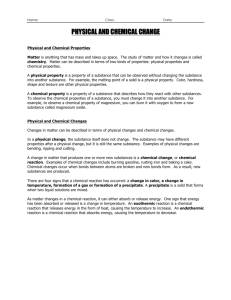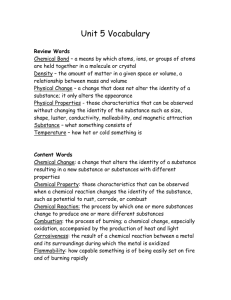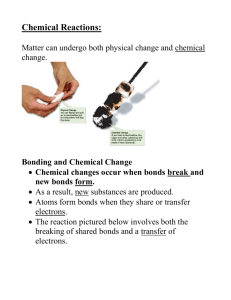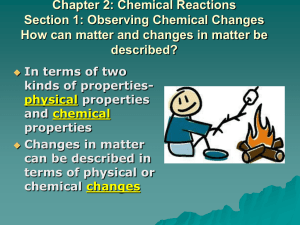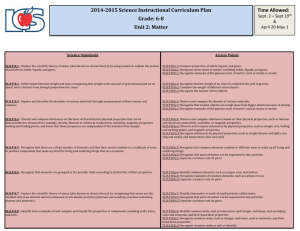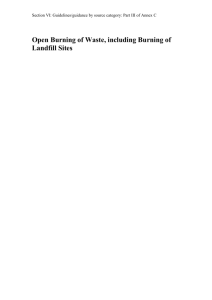Observing Chemical Change
advertisement
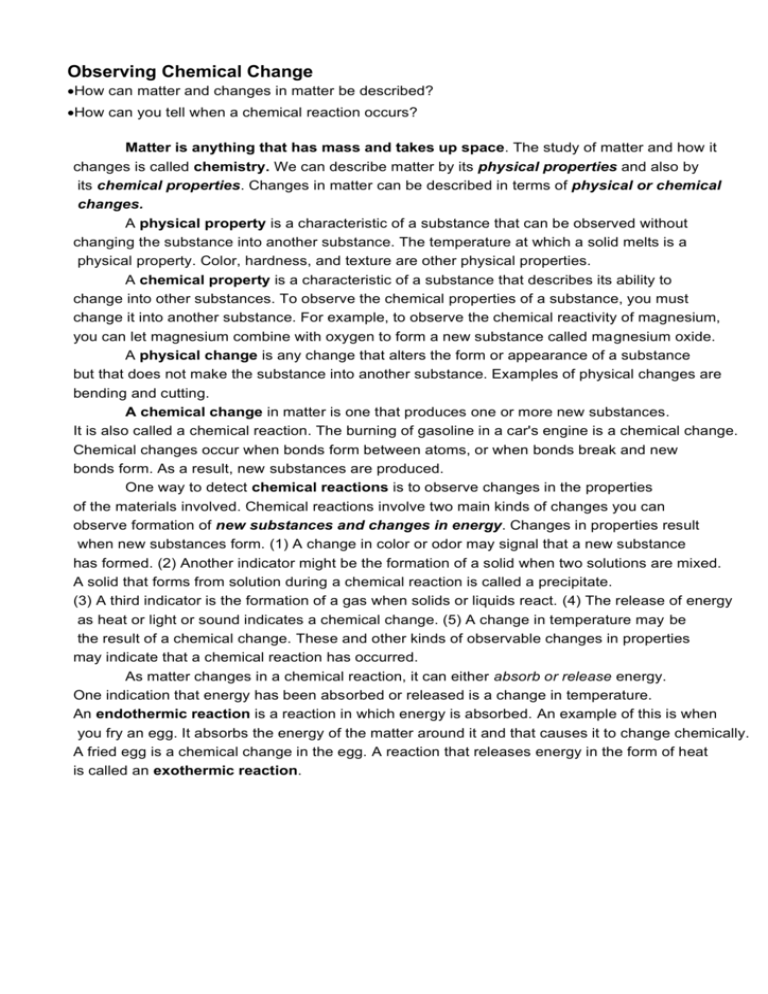
Observing Chemical Change How can matter and changes in matter be described? How can you tell when a chemical reaction occurs? Matter is anything that has mass and takes up space. The study of matter and how it changes is called chemistry. We can describe matter by its physical properties and also by its chemical properties. Changes in matter can be described in terms of physical or chemical changes. A physical property is a characteristic of a substance that can be observed without changing the substance into another substance. The temperature at which a solid melts is a physical property. Color, hardness, and texture are other physical properties. A chemical property is a characteristic of a substance that describes its ability to change into other substances. To observe the chemical properties of a substance, you must change it into another substance. For example, to observe the chemical reactivity of magnesium, you can let magnesium combine with oxygen to form a new substance called magnesium oxide. A physical change is any change that alters the form or appearance of a substance but that does not make the substance into another substance. Examples of physical changes are bending and cutting. A chemical change in matter is one that produces one or more new substances. It is also called a chemical reaction. The burning of gasoline in a car's engine is a chemical change. Chemical changes occur when bonds form between atoms, or when bonds break and new bonds form. As a result, new substances are produced. One way to detect chemical reactions is to observe changes in the properties of the materials involved. Chemical reactions involve two main kinds of changes you can observe formation of new substances and changes in energy. Changes in properties result when new substances form. (1) A change in color or odor may signal that a new substance has formed. (2) Another indicator might be the formation of a solid when two solutions are mixed. A solid that forms from solution during a chemical reaction is called a precipitate. (3) A third indicator is the formation of a gas when solids or liquids react. (4) The release of energy as heat or light or sound indicates a chemical change. (5) A change in temperature may be the result of a chemical change. These and other kinds of observable changes in properties may indicate that a chemical reaction has occurred. As matter changes in a chemical reaction, it can either absorb or release energy. One indication that energy has been absorbed or released is a change in temperature. An endothermic reaction is a reaction in which energy is absorbed. An example of this is when you fry an egg. It absorbs the energy of the matter around it and that causes it to change chemically. A fried egg is a chemical change in the egg. A reaction that releases energy in the form of heat is called an exothermic reaction. Chemical Name_________________________ _________ _ ______________________ _ Chemical Reactions • Observing Chemical Changes 1) What is matter? ____________________________________________________________ 2) The study of matter and how matter changes is called __________________________________ . 3) Complete the following table about physical and chemical properties of matter. Type of Property a. H How It Can Be Observed Example Without changing one substance into another Color b. Ability to burn 4) True or false? A physical change never alters the form or appearance of a substance. 5) Circle the letter of each choice that is a physical change in matter. a. bending a straw b. boiling water c. burning wood d. braiding hair 6) A change in matter that produces one or more new substances is a(n) ____________________________________________. 7) What happens to the bonds between atoms when chemical changes occur? Evidence for Chemical Reactions 8) List the two main kinds of changes that you can observe when chemical reactions occur. _____________________________________________________________________________ _____________________________________________________________________________ 9) If you detect a change in the color of a material, why does this indicate that a chemical reaction might have occurred? ____________________________________________________________________ 10) A solid that forms during a chemical reaction is called a(n) _________________________. 11) Suppose you mix two clear liquids together to form a new substance and bubbles form. What type of reaction might this indicate? Explain your answer. _______________________________________________________________________________ ________________________________________________________________________________ ________________________________________________________________________________ 12)True or false? A change in energy occurs during a chemical reaction. 13)Why does a change in temperature indicate that a chemical reaction may have occurred? _______________________________________________________________________________ _______________________________________________________________________________ 14) True or false? Endothermic reactions always result in a decrease in temperature. 15) Complete the table about changes in energy in chemical reactions. Type of Reaction Energy Change Endothermic Example a. b. Frying an egg Energy is released Burning wood __________________________ Summing it Up 16) Complete the following table. Describe changes in properties that you might notice during each process and state whether the changes are chemical or physical. Changes in Matter Event Event Observable C Observable ChangesType of Chan Type of Change Baking a cake Baking a cake 1. 11111111 1. Burning a log 3. Burning a log 4. 3. water Freezing water Freezing 1. 2. 2. 3. 5. 2. 4. 6. 6. From the list below, choose the term that best completes each sentence. matter chemical reaction chemistry precipitate physical change endothermic reaction exothermic reaction 17) Any change that alters a substance without changing it into another substance is a(n) __________________________ 18) _________________________________is anything that has mass and takes up space. 19) A reaction that releases energy in the form of heat is called a(n) ______________________. 20) A(n) _________________________ is a reaction in which energy is absorbed. 21) A chemical change is also referred to as a(n) _______________________________________ 22) A(n)______________________________is a solid formed from a solution during a chemical reaction. 23) _______________________is the study of the properties of matter and how matter changes.
